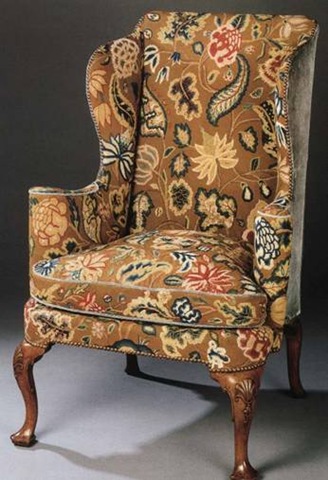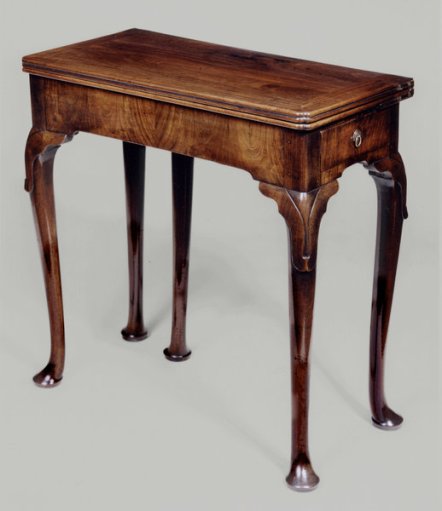The 18th Century is a golden age in English furniture. People are able to spend more money on furniture, and they demand higher standards and comfort.
Types of pieces include chairs, sofas, tables, secretaries, high chests of drawers (tallboys)m dressing tables, tall case clocks, fire screens, and beds. Furniture arrangements support room function, with an emphasis on formality, customs, harmony, and integration. Walnut dominates Queen Anne furniture. Imported mahogany supersedes it in the 1730s and becomes the chief wood for Early Georgian and Chippendale furniture.
Seating- includes side chairs and armchairs, settees, easie chairs, and many forms of armchairs and armless chairs with upholstered seats and backs. Settees resemble large chairs for two people.



Tables- Georgian drawing rooms have numerous tables, reflecting society’s interest in inviting friends for tea, cards and conversation. Dining tables have three parts: a center with drop leaves and two semicircular ends. The ends are placed against the wall when not in use.


Storage- Every fashionable Georgian drawing room has a commode. It features straight, bombe, and/or serpentine-shaped fronts and sides.

Beds- four-poster beds are most fashionable. Queen Anne types follow earlier forms, but Chippendale headboards are elaborately carved with Rococo, Chinese, or Gothic details. Beds feature elaborate hangings with trims and tassels.
Textiles- Typical textiles include velvets, silks, wools, linens, cottons, and leather. Wood block and copperplate print fabrics are common. Textiles provide much of the color in rooms.
Glass- the period also witnesses the development of Anglo-Irish glass. The most famous glasshouse, Waterford, opened in 1783.

Mirrors-

